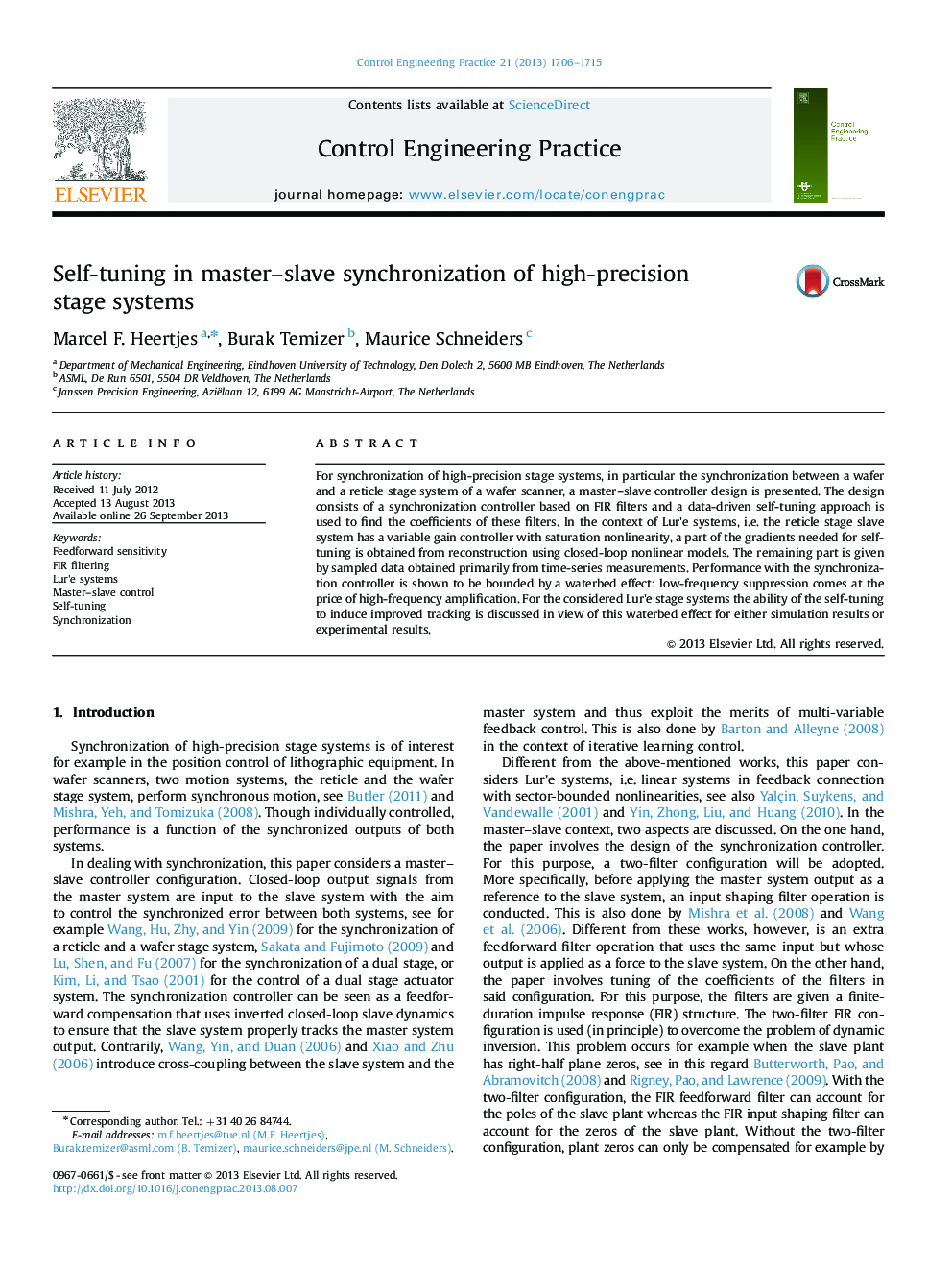| Article ID | Journal | Published Year | Pages | File Type |
|---|---|---|---|---|
| 699054 | Control Engineering Practice | 2013 | 10 Pages |
•A synchronization controller design having a two-filter FIR configuration.•A data-driven self-tuning approach used to obtain the FIR coefficients in the context of Lur'e systems.•An integral expression of the so-called feedforward sensitivity function used to pose a waterbed effect in which low-frequency suppression of the synchronization errors comes with high-frequency amplification of these errors.•The synchronization controller design and parameter tunings subject to this waterbed effect being tested on an industrial case of reticle and wafer stage synchronization.
For synchronization of high-precision stage systems, in particular the synchronization between a wafer and a reticle stage system of a wafer scanner, a master–slave controller design is presented. The design consists of a synchronization controller based on FIR filters and a data-driven self-tuning approach is used to find the coefficients of these filters. In the context of Lur'e systems, i.e. the reticle stage slave system has a variable gain controller with saturation nonlinearity, a part of the gradients needed for self-tuning is obtained from reconstruction using closed-loop nonlinear models. The remaining part is given by sampled data obtained primarily from time-series measurements. Performance with the synchronization controller is shown to be bounded by a waterbed effect: low-frequency suppression comes at the price of high-frequency amplification. For the considered Lur'e stage systems the ability of the self-tuning to induce improved tracking is discussed in view of this waterbed effect for either simulation results or experimental results.
